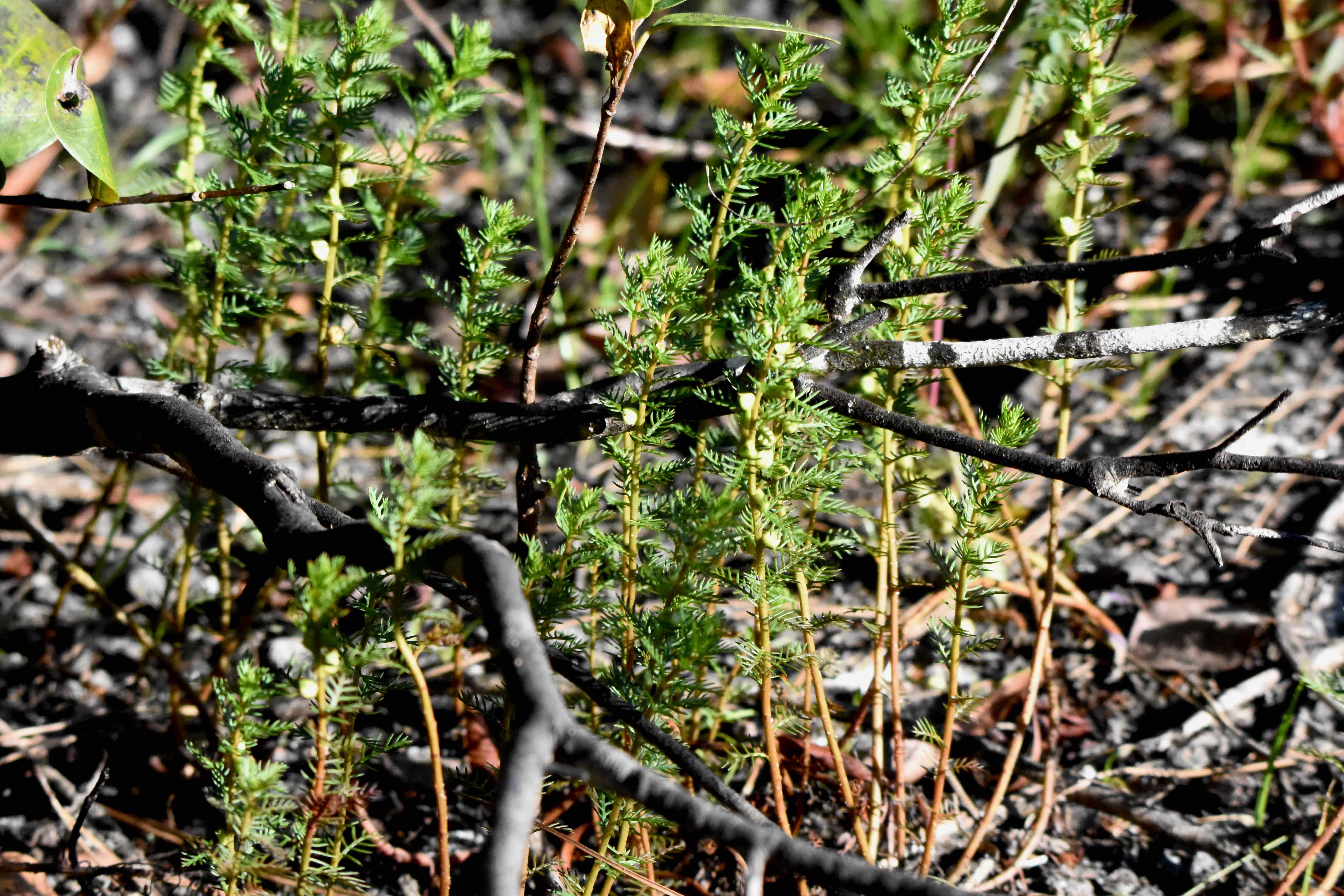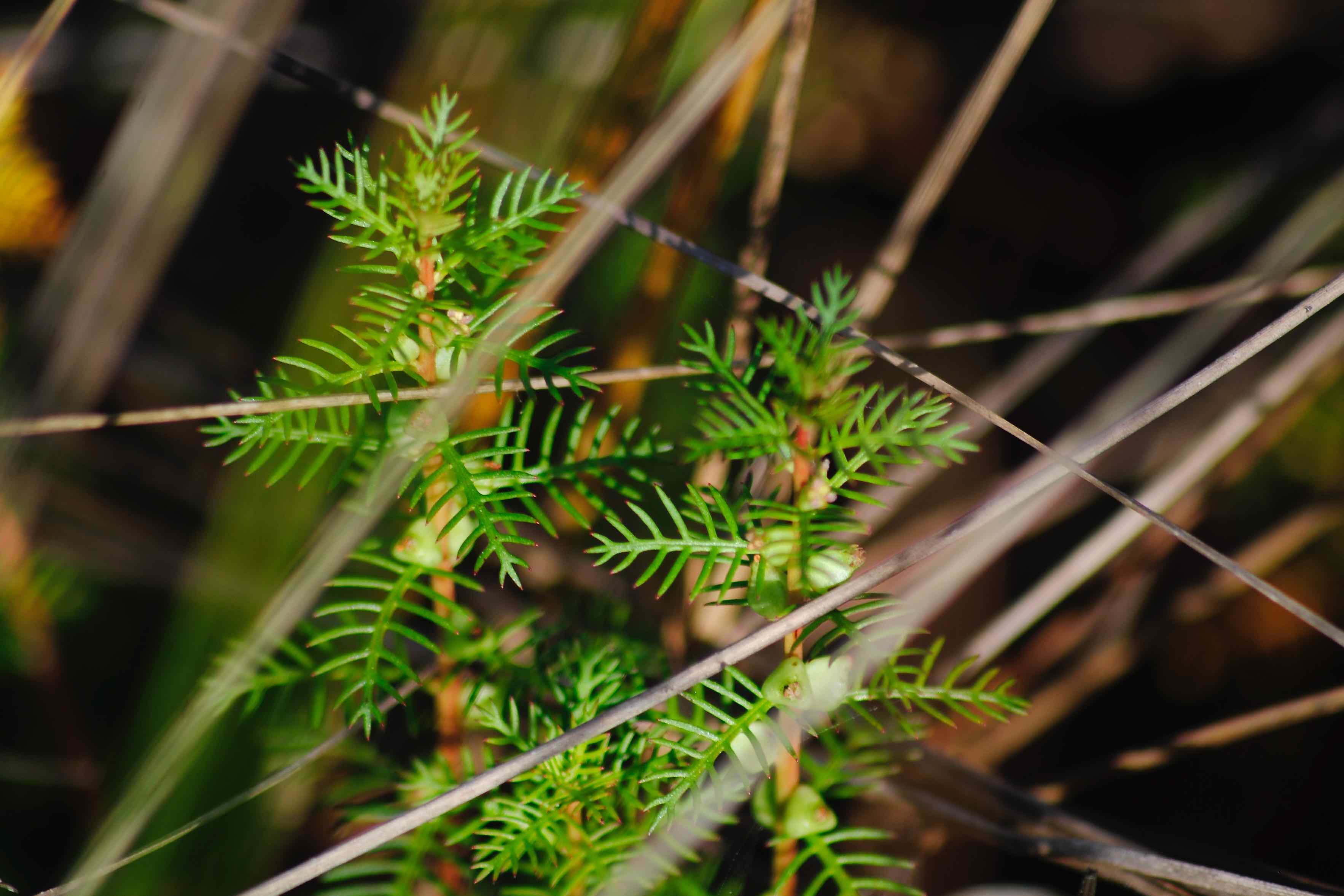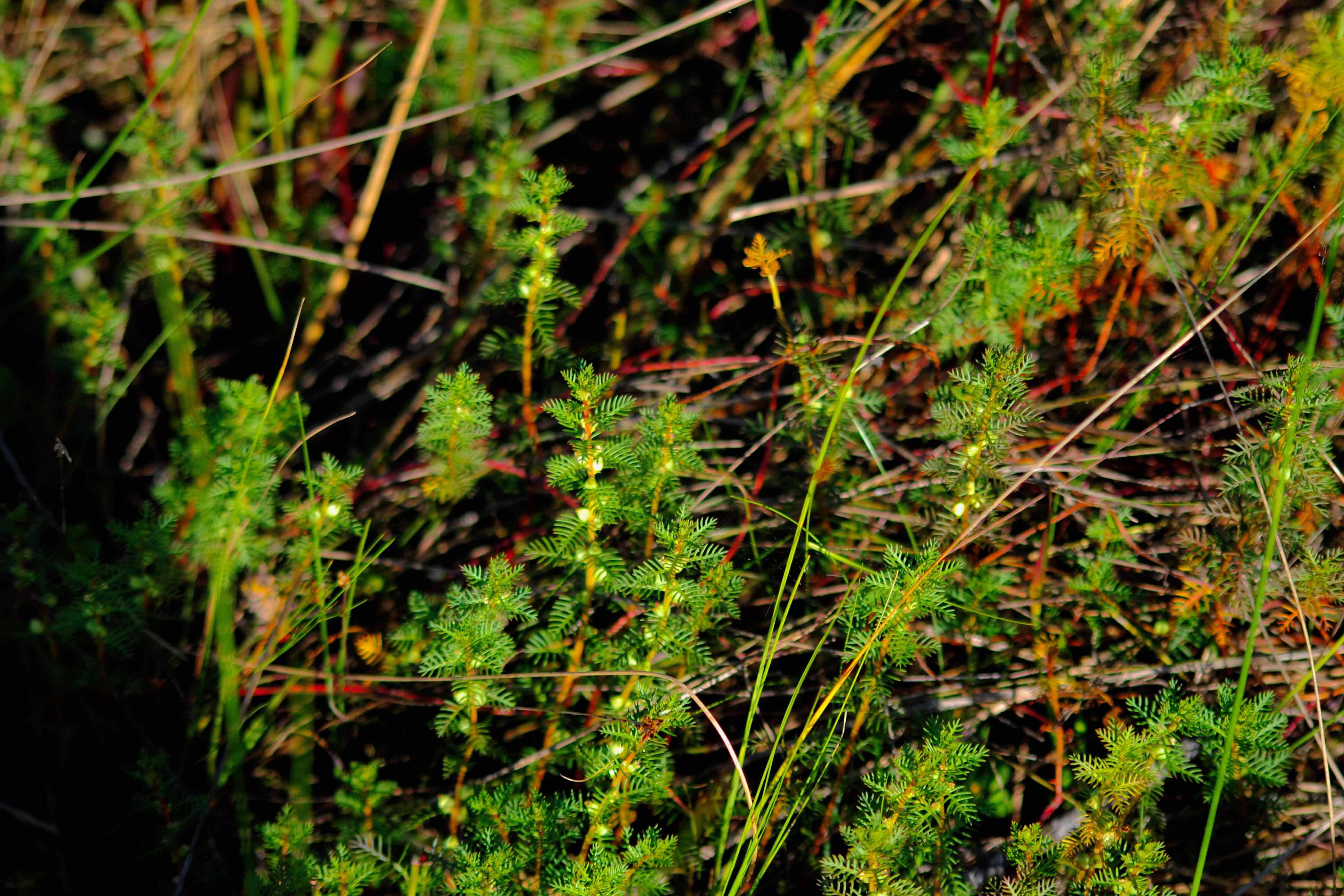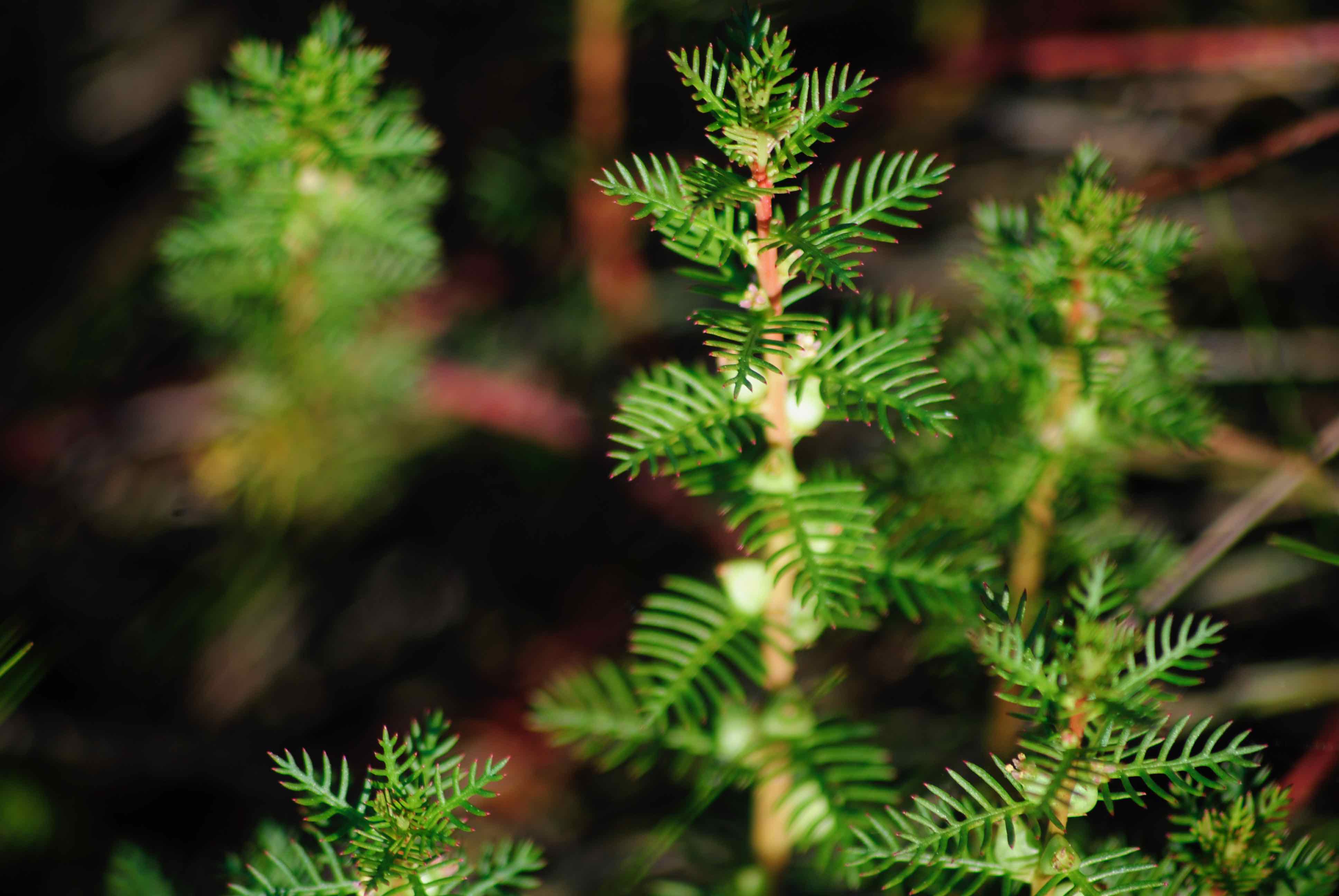
Mermaid weed, photographed at the George and Marian Jones Hungryland Wildlife Management Area, Indiantown, Martin County, in April 2018.
Ok. We just don't get the name. There must be some logic behind mermaid weed, Proserpinaca pectinata, but it just escapes us. But then nobody ever asks us for our opinion when it comes to these matters.
In any case, mermaid weed stands out in the great greenery of the natural world. It is an aquatic plant that can find its way on land as well as in water. It is a striking plant, with reds and yellows and unusual leaves that look more like a fern than a flowering plant, which mermaid weed definitely is.
Mermaid weed is a Florida native, but a rare one even though it's found in most of the state's 67 counties. Its native range extends from Texas along the Gulf Coast, up the Atlantic to New England, and into Canada. There's a tiny population in one county in Michigan. Rhode Island and Maine list mermaid weed as "of special concern." Michigan and New Hampshire classify it as endangered, New York threatened and it's believed to be extinct in Pennsylvania. It has no special status in Florida, but again, it is considered rare in our area by the Institute for Regional Conservation in Delray Beach. Despite population declines in places, the International Union for Conservation of Nature rates mermaid weed a "least concern" on its extinction scale.
It is not a particularly tall plant, but it is erect. The feathery leaves alternate on the stem. It produces white flowers at the base of its leaves in spring and summer, but they are so small as to be difficult to see with the naked eye. The flowers in turn produce a three-angled nutlet as the fruit. It is a perennial.
The seeds are an important food for a variety of shorebirds and water fowls, while the plant itself, when it is in water, provides cover for a variety of creatures.
Mermaid weed has a better known cousin, Proserpinaca palustris, also called mermaid weed, that is used in the aquarium trade. The native range of both plants overlap, and both have feathery leaves, but P. palustris will also have leaves that are just slightly toothed around the edges while our guy, P. pectinata, only has the comb-like leaves. P. pectinata is also starting to generate some interest among aquarium owners because of its striking looks. There is another plant with similar leaves, parrotfeather, but they are arranged in whorls of five or six around the stem as opposed to mermaid weed's alternate look.
Mermaid weed is a member of Haloraginaceae, the water-milfoil family. Other common names include comb-leaf, combleaf mermaidweed, and comblike mermaid weed.
Click on photo for larger image
Links for Mermaid Weed



